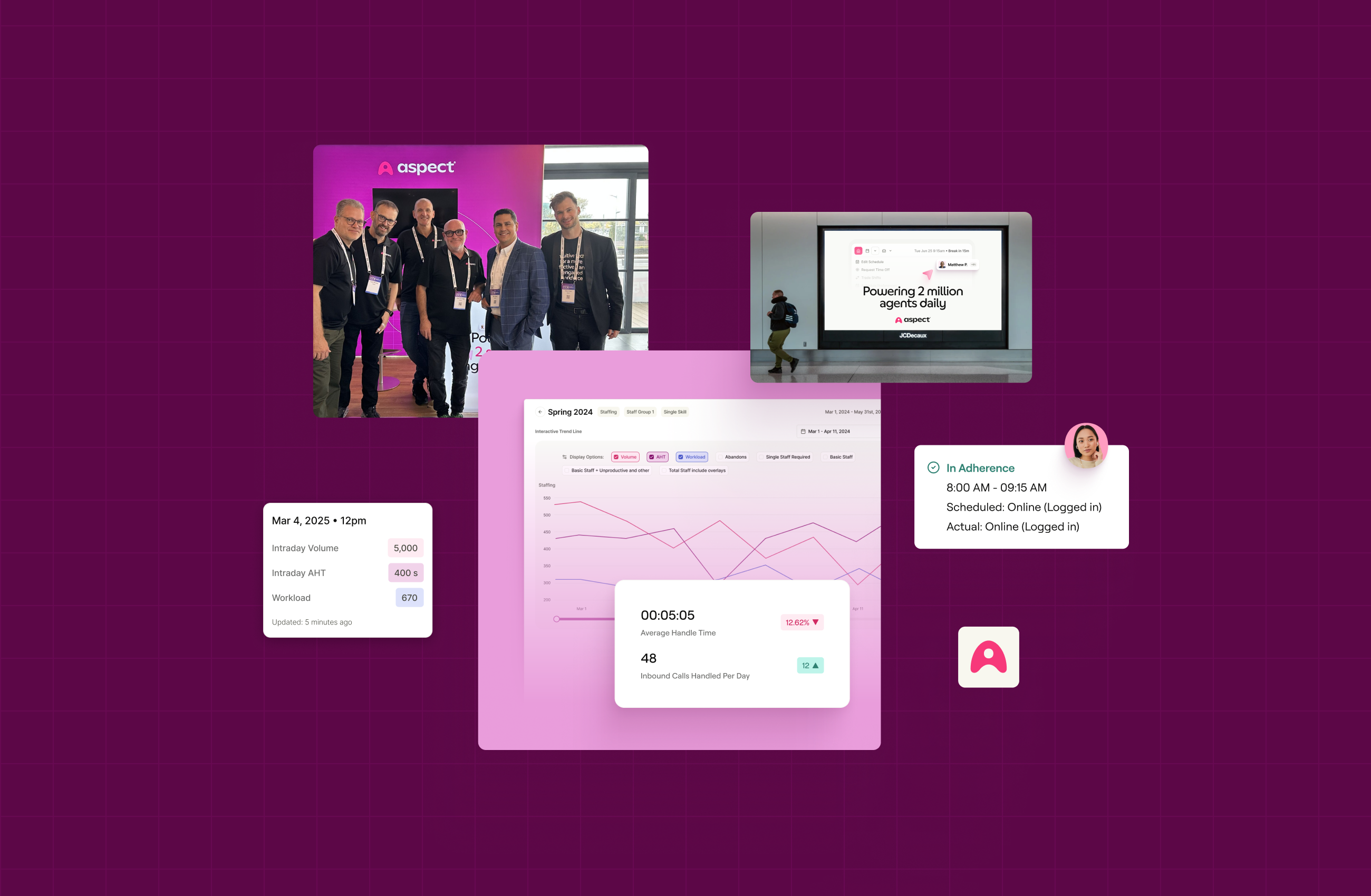Countless studies have proven that customer experience (CX) and employee experience (EX) are deeply connected. Delivering exceptional CX hinges on better EX, and maintaining both is critical to business success.
In our latest white paper, "Redefining agent performance: Is EX your CX advantage?," we examine the strong connection between these two factors, present supporting statistics, and make the business case for balancing both experiences.
In this blog, we'll highlight a few actionable strategies that you can take this quarter to optimize workforce performance, employee experience, and customer satisfaction.
Workforce challenges that require balanced CX and EX
According to Gallup research, organizations with highly engaged employees experience 10% higher customer loyalty and 23% higher profitability. However, today's workplace presents new challenges that complicate efforts to improve employee satisfaction and, in turn, enhance customer satisfaction.
These challenges include:
- Post-pandemic workforce expectations. Employee engagement fell to an all-time low during the pandemic and never quite recovered, especially in high turnover industries like contact centers.
- Rising customer demands. Customers now expect higher levels of service and more effective solutions through digital channels, forcing employees to diversify their skills and devote additional time and energy to their work—this can eventually lead to high levels of turnover.
- Technology integration struggles. Customers require effective digital channels, and technology stacks must keep up with these rising needs, including efficient integrations between tools.
- Remote/hybrid work considerations. The rise of hybrid and remote work environments adds complexity to workforce management and creates challenges for fostering employee engagement and workplace connection.
While each sector and organization faces its own unique challenges, all businesses can benefit from striking a balance between employee satisfaction and customer satisfaction. Let's explore a handful of actionable strategies.
Strategies to balance CX and EX
1. Collaboratively create work schedules
Strict, inflexible schedules lead to poor work-life balance and ultimately contribute to employee burnout. A collaborative scheduling process empowers employees over their work lives, enabling them to work during times that best fit their needs. When employees are empowered through flexible scheduling that accommodates their needs, job satisfaction increases and customer interactions improve as a result.
Workforce management tools can provide solutions that balance business requirements with employee preferences. This ensures your organization maintains the necessary coverage to effectively assist customers while providing employees with well-balanced schedules.
2. Develop experience-driven performance management
Traditionally, contact centers have operated with rigid performance management systems, requiring agents to meet strict KPIs. This approach extends to many other industries as well. When employees perceive that their performance metrics are valued more than their humanity, job satisfaction inevitably declines—directly affecting the quality of customer service they provide.
Business leaders must develop new approaches to performance management that balance recognition, reward, and coaching. While it's essential to acknowledge employees who go above and beyond, it's equally important to celebrate small wins and create supportive solutions that train, rather than criticize, underperforming employees.
3. Measure the KPIs that matter most
Your KPIs may be misleading you, causing you to focus on the wrong performance metrics for your business. Organizations shifting toward an EX-focused approach will need to adopt performance strategies that track different metrics than those traditionally prioritized. Determining the correct metrics to measure will give you a holistic view of your workforce, including employee experience and customer satisfaction.
Gather more insights about KPIs that focus on employee experience by downloading our latest report here.
4. Prioritize empathy-based leadership
Leading with empathy and employee-focused practices will improve EX, help your business retain employees, and ultimately improve CX. Organizations must actively train leaders in empathetic practices, ensuring they genuinely value employees and provide them with the necessary resources to excel at their jobs and satisfy customers. This approach includes empathetic training, coaching, and constructive feedback sessions that guide employees toward improved performance.
5. Explore technology solutions to better support EX and CX
Implementing new solutions into your tech stack can be a long-term goal, but exploring new workforce software can start today. As you research workforce software, consider solutions that include:
- Self-service options for employee scheduling, to ease friction between admins and agents.
- Self-service solutions for customers to directly address their concerns.
- AI-powered tools that can reduce agent workload by managing routine customer interactions.
- Platforms that offer easily customizable dashboards to monitor performance.
Contact the Aspect team to learn more about how our workforce solutions can enhance EX and CX across your business.
Build a culture of balance
Enhancing your customer experience and improving your bottom line begins with implementing strategies that boost employee satisfaction. This means putting in place effective leadership approaches, tracking meaningful performance indicators, and implementing appropriate technology solutions designed to enhance the employee experience.









